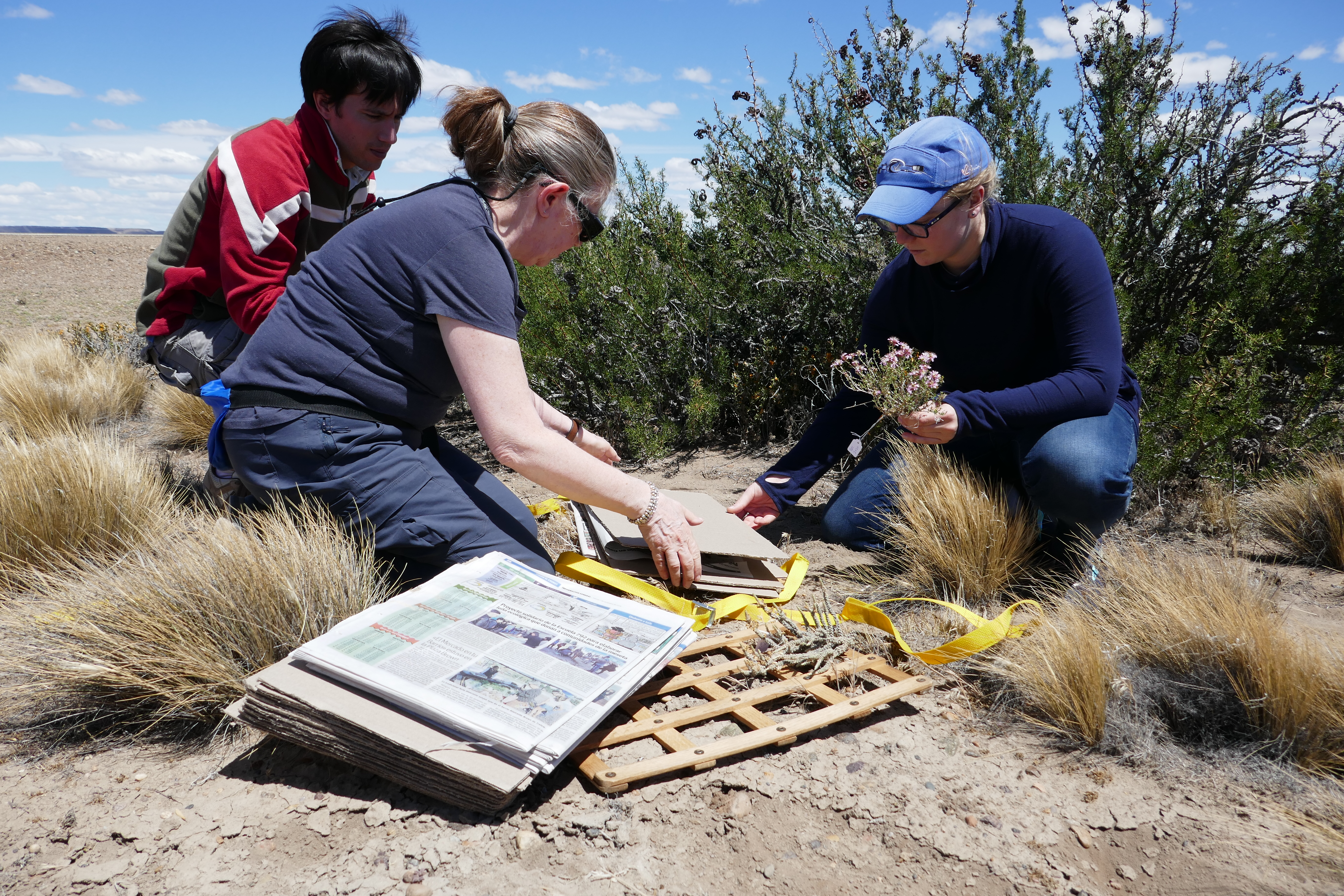Prospective Graduate Students: Graduate students interested in joining Dr. Gandolfo's lab should apply to the Field of Plant Biology at Cornell, School of Integrative Plant Sciences (SIPS), College of Agriculture and Life Sciences (CALS). You can select a Research Concentration, and view the basic curriculum.
Please contact Dr. M. Alegandra Gandolfo to discuss opportunities in her lab. In addition, SIPS has a strong and active Graduate Council to ensure that the needs and goals of graduate students are addressed, in the classroom, field or lab.
Paleobotany
The study of fossils, and more broadly, the complete fossil record has taken on new importance with the advent of repeatable phylogenetic methods, the ability to model both process and pattern in evolutionary history, and an increased focus on development in the context of evolution (the “evo-devo” revolution). The research in my lab focuses on several lines within Evolutionary Biology with the goal of answering some of the key questions such as origin of angiosperms, the evolution of land plants, seed plants and flowering plant adaptations through time, evolution of Southern Hemisphere floras, the influence of the climate on these floras, and paleoenvironmental reconstructions.
Currently, we are studying several floras of Early Cretaceous to Miocene age of Patagonia, Argentina in collaboration with American and Argentinean colleagues. These floras have yielded an unexpected wealth of fossils that so far include the oldest records worldwide for many taxa such as Physalis (Tomatillo!) and Eucalyptus, several Southern Hemisphere families (e.g. Cunoniaceae), some with unexpected Northern Hemisphere distribution (e.g. Icacinaceae), and aquatic ferns. We are also working on an Eocene flora from Seymour Island aiming to identification of the Paleocene-Eocene Thermal Maximum/Early Eocene Climatic Optimum. (PETM/EECO)
These projects are providing data for those researchers interested in the relationships of climate, flora and biogeography of the Southern Hemisphere, in addition to improving our understanding of the floristic composition and a better comprehension of distribution patterns of these floras.

Systematic Botany
Research questions address in the lab go well beyond the collection and examination of fossils, and require deep study and understanding of plant development, external morphology, internal anatomy, taxonomy and the nature of evolutionary change in a phylogenetic context in these systems. For answering these questions, we use traditional neobotanical and paleobiological methods combined with non-traditional ones. Approaches include morphological and anatomical descriptions and comparisons of fossils with extant materials, SEM, TEM, and most recently, cutting-edge microCT-Scanning; when combined these methods provide us with a wealth of characters sometimes previously unknown in the fossil record as they reveal even more features that help interpretation. The non-traditional methods comprise the actual inclusion of the fossils within combined morphological and molecular data phylogenetic analyses using the principles of maximum likelihood, Bayesian, and parsimony as used in phylogenetics, co-evolution, and biogeography. For these non-traditional methods, students are immersed in the study of extant taxa.